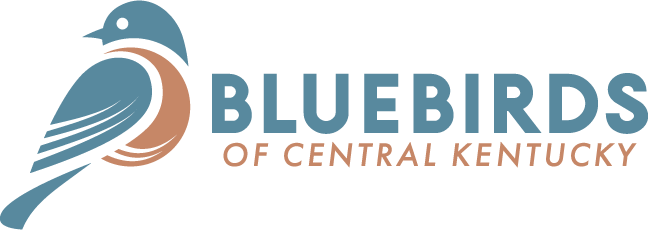Hit the trail!
Frankfort, KY
West Sixth Farm
Josephine Sculpture Park
What We Do.
We create safe nesting habitat for native songbirds.
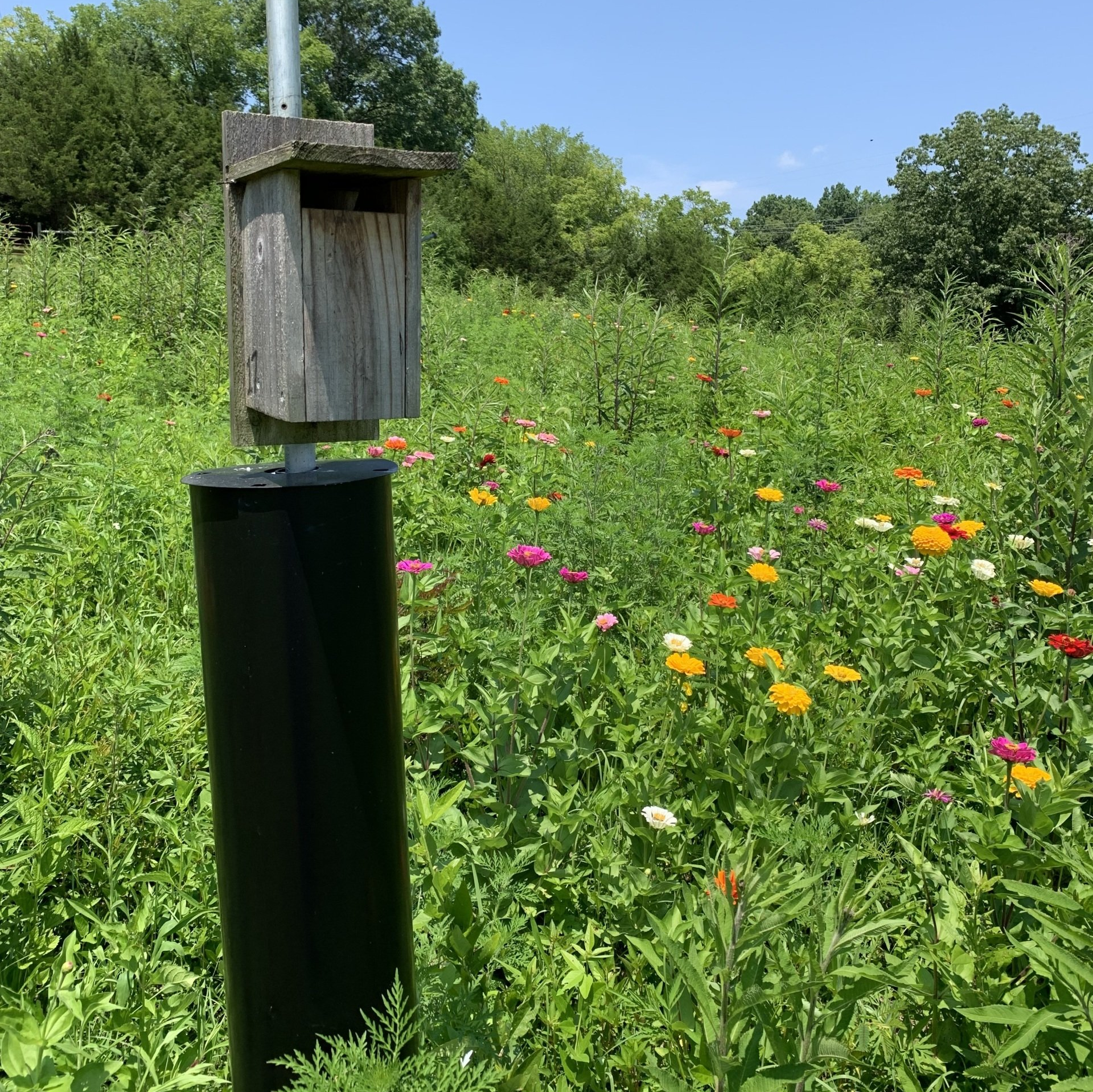
Our management perspective.
Bluebirds of Central Kentucky (BOCK) actively manages 36 nesting boxes on two trails in Frankfort, KY. The majority of the boxes were built with the help of Phil Tamplin of the Kentucky Bluebird Society using the Dr. Wayne Davis slot box design. Dr. Wayne Davis was a professor at the University of Kentucky and a local legend for his installation of thousands of bluebird boxes across the state. Using the Wayne Davis box design acknowledges his great work and dedication to restoring nesting habitat for the Eastern Bluebird in Kentucky.
The management approach to these bluebird trails mitigates one risk for native cavity nesting birds, which are protected by the Migratory Bird Treaty Act of 1918.
Our management philosophy.
The BOCK approach to bluebird trail management seeks to improve the success rates of each brood while taking care not to do more harm than good. The Guest and Pest rule guides the decision making for when to intervene and when to let nature take its course.
Started in 2018, the trail has been largely self-funded. Each year since improvements to the boxes have been made as funding and resources are available. You may notice that some of the earliest photos of the trail do not have predator baffles. BOCK encourages the use of predator guards to minimize the risks from raccoons, cats, snakes, and sometimes squirrels. Baffles were added in a phased approach as resources became available. The success rates for the boxes with baffles were much higher than those without baffles. In a couple photos, you can see muddy paw prints on the black anodized aluminum baffles where raccoons or cats were dissuaded from grabbing a quick snack.
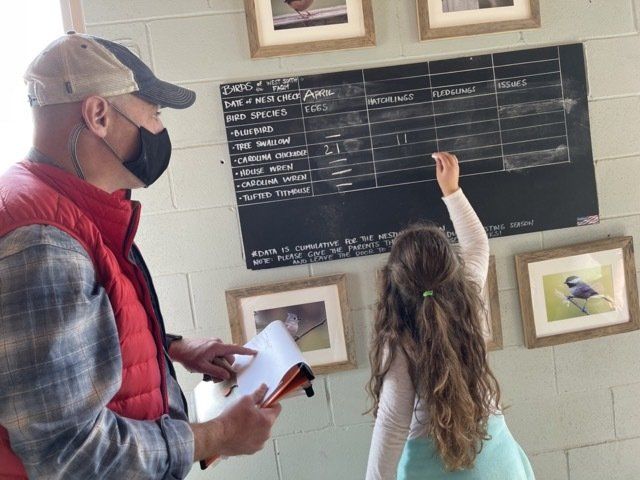
Slide title
Write your caption hereButton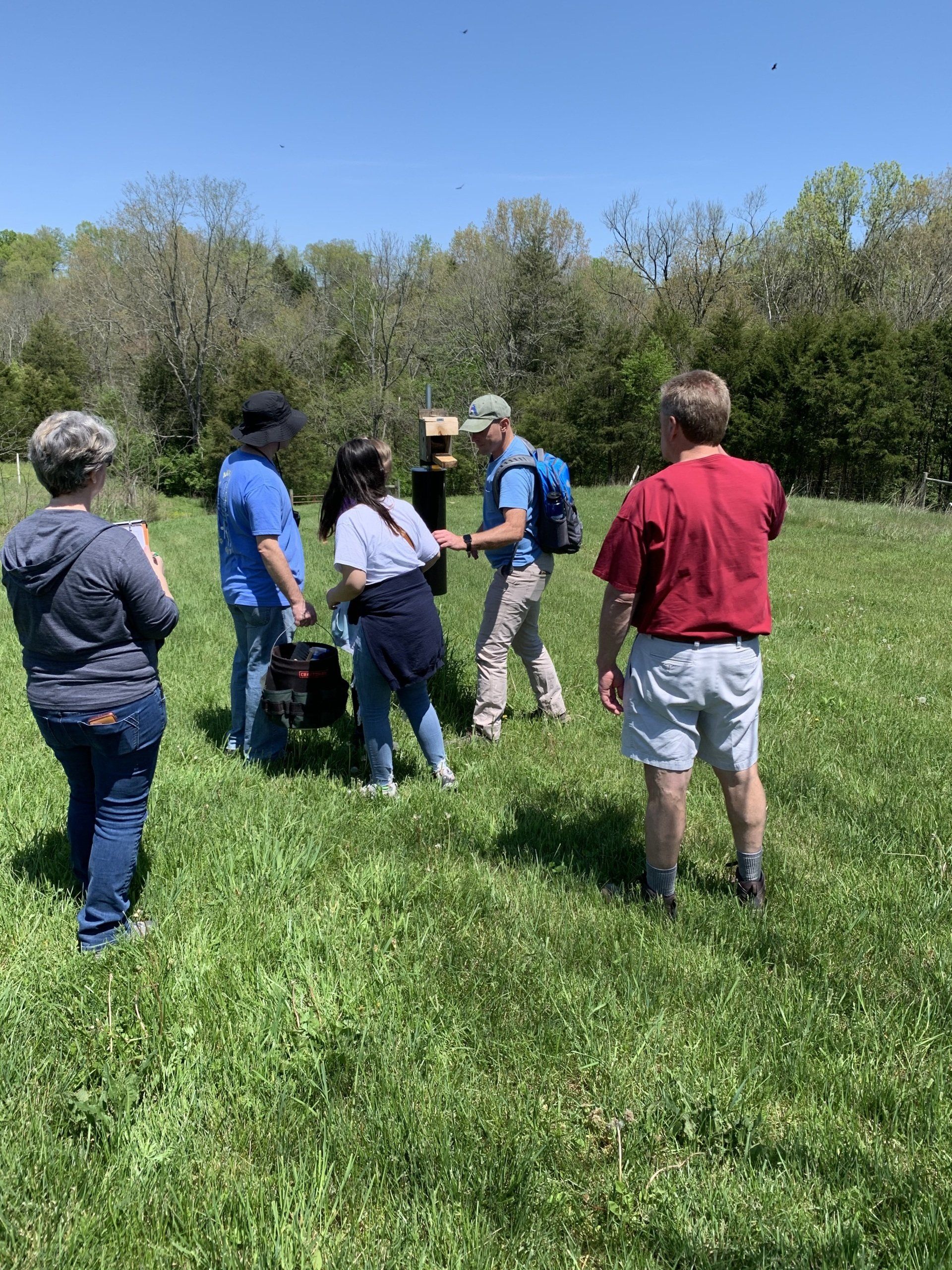
Slide title
Write your caption hereButton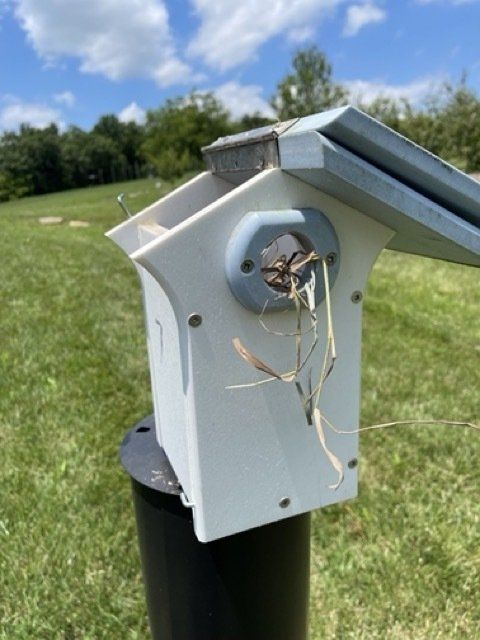
Slide title
Write your caption hereButton
Specific mitigations for nesting success.
Competition
Demand for nesting space is higher than the supply most of the time. While some species seem to coexist well together, others are much more aggressive. This is true especially for the earlier nesting birds like the Carolina Chickadee, Eastern Bluebird. Most of the time, parents will defend their nests, eggs, and/or hatchlings successfully. The exceptions seem to be cases where the House Wren and House Sparrow are the aggressors. House Wrens are native species whose active nests are protected by federal law. They often arrive at the bluebird trail looking for suitable nesting space later in the year than the Bluebirds, Chickadees, and Tree Swallows. When that happens, the House Wren will destroy the eggs by pecking holes in the shell or removing small hatchlings from the nest.
Wren Guards
The use of wren guards once eggs are present has greatly improved the success rates of these earlier broods. More specifically, the Carolina Chickadee fledgling numbers saw a great turnaround once the wren guards were deployed. You can see in some of our photos our wren guards in use on several boxes. This discourages wrens from nesting boxes being used by other species. When wren guards are added to an active nesting box, attention is given to make sure the parents return to the box and enter. If after a reasonable period of time the parent cannot navigate around the wren guard, it is removed.
Predation
The food web is cruel when you're not at the apex. While all reasonable protections are employed on the trails to minimize the risks of predation it will happen. Raccoons and snakes need to eat too. As good Bluebird Landlords it is our responsibility to offer our nesting guests a fighting chance at raising their brood. There are many ways to mitigate the risk of predation. The first year we didn't have the resources to baffle every nesting box and predation events were common. Each year we have invested in improvements to make the trail safer which leads to more bluebirds. Ultimately, that's why we started this thing in the first place.
Predator Guards, Baffles
Stovepipe baffles are used on our trails at West Sixth Farm and Josephine Sculpture Park. Kristin Nelson at Wild Birds Unlimited - Frankfort, KY is a great source of information.
House Sparrows
House Sparrows receive no quarter on these bluebird trails. BOCK recognizes that actively managing House Sparrows is controversial and has led to some debate. Ultimately, no trail of nesting boxes will be successful for native birds if HOSP are allowed to take over. And they will.
Summer Heat
As the average annual temperatures continue to climb, keeping the inside box temperature less than 104 degrees fahrenheit requires human intervention. Heat shields are added to absorb direct sunlight and shade the sides of the boxes to help keep the hatchlings from overheating.
Crawling Pests
Ants, mites, and parasitic larvae are pests that negatively affect the health of hatchlings and their parents. BOCK uses natural, non-pesticidal means to control insect threats to nests. Tanglefoot (an all-natural deterrent) is applied liberally to the mounting pole to keep ants from invading nesting boxes. Substances like Tanglefoot should never be applied in or near the nesting box to keep it from fouling the feathers of parents or hatchlings.
Parasites
Diatomaceous earth (DE) is used to protect nests from mites and blowfly larvae. Diatomaceous earth is a mechanical insecticide that kills mites and larvae but is not harmful to birds. Special care is taken not to get any DE in the nest cup to avoid drying out the skin of the hatchlings.
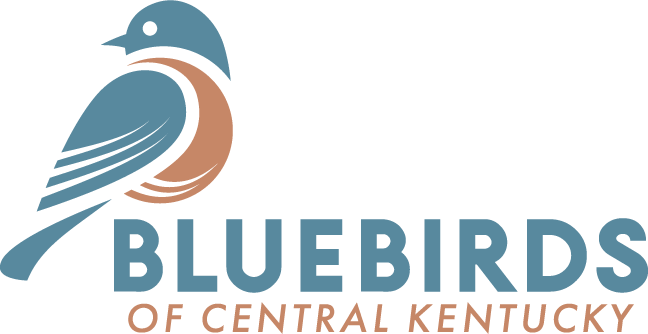
Explore the trails
West Sixth Farm
4495 Shaddrick Ferry Rd., Frankfort, Ky.
Josephine Sculpture Park
3355 Lawrenceburg Rd., Frankfort, Ky.
Our mission
Creating habitat in Central Kentucky to help restore the Eastern Bluebird population.
Get in touch
bluebirds.cky@gmail.com
